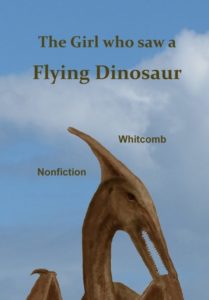Whether you write fiction or nonfiction, understand your choices involving truth and error in human characters and in human beliefs. Consider a balance between extremes, not to ever compromise the truth but to perceive and elucidate, sometimes separate and label, the truths and errors that sometimes cause conflict between opposing camps, including conflicts between opposing human philosophies.
How refreshing to enjoy a family movie in which most of the characters are reasonably human! That balance generally comes not from the acting talent: The script writer created that balance. Compare that with a movie in which each character is firmly entrenched in one of two camps: bad guys who want to destroy the universe versus good guys who want to save it.
But bad-versus-good (which can be considered a version of “truth-versus-error”), has a competitor, in nonfiction writing in particular: competition between philosophical camps in which both sides have a mixture of truth and error. I write from experience, for both of my books relate to a contest of philosophies in American culture, and both philosophies have a mixture of truth and error.
Before delving into details about my own writings, consider what every LDS author should know about “bulverism,” a word invented by C. S. Lewis. Wikipedia quotes him thus:
You must show that a man is wrong before you start explaining why he is wrong. [Lewis recognized that as proper and that what follows is wrong.] The modern method is to assume without discussion that he is wrong and then distract his attention from this (the only real issue) by busily explaining how he became so silly.
Perhaps you have never been guilty of commiting bulverism yourself; but what if you become a victim of someone else’s bulverism? Become aware of this problem, this faulty unfair approach that avoids reasoning, and when you become a victim don’t retaliate with your own bulverism but stear back to reasoning. Plow into the subject itself, straight into it, without questioning your opponents motivations or intelligence or qualifications. At the end of the field, after finishing that straight furrow, you might take a few seconds or so to chase away the rat that’s trying to make a nest in your field; never before finishing a furrow.
I write nonfiction cryptozoology books. I rarely mention Loch Ness or Bigfoot, for I specialize in eyewitness accounts of apparent living pterosaurs. I know that’s abscure, having written two books to become the world’s most prolific writer on the subject. Truth-plus-error has become an important part of my approach, for most of my associates in living-pterosaur investigations are Young Earth Creationists, believing the universe to be not much older than six thousand years. I strongly support the truths they recognize in the Bible, including the beginning of the human family with Adam and Eve; I do not support the idea of a young universe. Writing sometimes requires delicate balancing.




Pingback: Bulverism and Pterosaur Sightings - Pterosaur Eyewitness